The best potato varieties: types, description and features
Homeland potatoes it is considered to be South America, from where it spread throughout the world. Many people did not immediately like this root vegetable. There is nothing strange in this, because not everyone knew that it was prepared and consumed raw.
Potatoes became widespread in Russia only in the 19th century. Having appeared on the Russian table, he gradually replaced the turnip, which was served in various forms. Initially, potatoes were only available to wealthy families and were grown in small quantities, but over time, many types of this amazing root vegetable were discovered. All potato varieties differ in taste, resistance to diseases and external environmental factors, as well as in terms of planting and ripening.
Content:
- General classification of potato varieties
- Super early varieties of potatoes
- Early maturing potato varieties
- Medium early varieties
- Mid-season varieties
- Late-ripening potato varieties
- The most productive potato varieties
- Features of growing potatoes
General classification of potato varieties
Dates of planting and ripening potatoes are different and therefore all varieties can be divided into the following groups:
- Very early varieties, some of them are called sprinters and early maturing. Their characteristic feature is rapid growth and a short growing season - the formation and maturation of root crops. Landing produced after frost in about April and after 1.5-2.5 months, the potatoes are ready for harvesting. The disadvantages include the inability to long-term storage.
- Medium early varieties. More unpretentious and able to be stored longer. From the moment of planting to harvesting, at least 2.5-3 months pass. Pre-planting preparation is required, through germination tubers. For this, the planting material is laid out in a room where there is enough light and heat. Small dense bores signal that the potatoes are ready for planting.
- Mid-season varieties. The growing season is 3-3.5 months. These are the most common varieties with good taste. They are unpretentious in leaving. Harvesting is in August.
- Mid-late and late-ripening varieties. The most modest are well adapted to long-term storage and do not require pre-germination of root crops. The maturity of root crops occurs in 3.5-4 months.
Advice! When purchasing seed potatoes, it is desirable to have a certificate that confirms the check for diseases... If the seeds are infected, for example, with a nematode, then it will not only spoil the crop, but also permanently infect the soil.
Also, potatoes have different tastes and contain different starchiness.
Some varieties are better for adding to first courses, the second are more boiled and suitable for mashed potatoes, and still others are good for frying.
Super early varieties of potatoes
The following varieties can be classified as super early:
- Timo Khankiyan. It has low compact leafy bushes. Blooms with bluish-purple flowers.The root vegetables are round with a smooth yellowish skin and have a small number of small eyes. The pulp has a yellowish tinge in section, soft and crumbly when cooked. Has good taste. Suitable for boiling and frying. Differs in high productivity and resistance to potato cancer, late blight, scab and viruses. It tolerates heat well and is not afraid of soil moisture. The disadvantages include intolerance to recurrent frosts. The quality of the harvested crop depends on compliance with the conditions storage... In case of non-observance of the temperature regime and the complete absence of ventilation, the level of keeping quality of potatoes is greatly reduced.
- Ariel. Medium-sized bush with erect stems. The inflorescences form a small white corolla. Root crops are oval with a yellowish skin, light yellow in section. It has a good taste and keeps well. Does not darken during cooking. Differs in high productivity. Forms root crops to the defeat of late blight tops. This makes it possible to get a crop twice a season in areas with a long summer. The variety is not afraid of leaf curling, nematodes, viruses, cancer, late blight of tubers and scab, but it is often affected by late blight of the tops.
Early maturing potato varieties
Description of varieties:
- Luck. A medium-sized bush with spreading leafy stems, on which, during a short flowering period, white flowers with petals bent down are formed. Seeds are rarely formed. Tubers are round or oval in shape with a blunt apex. The rind is thin, with a smooth creamy surface. The eyes are small. In the context of a raw potato, it is dense and white, but it can turn slightly yellow during cooking. This variety is well adapted to various climatic conditions and soils. It tolerates heat and drought equally well. Features affect yield agrotechnics... With proper cultivation and timely planting, each bush can give 1.5 kilograms potatoes... Advantages: cold tolerance, quickly forms tubers (ripening time from 40 to 60 days), is not afraid of diseases such as scab, rhizoctonia, potato cancer and wrinkled mosaic and viruses, storage ability, with proper storage conditions, potatoes can be stored until the next harvest , resistant to mechanical damage and good taste.
- Impala. Quite large upright bushes reach 75 cm with whitish flowers. Fruits in large oval tubers with smooth yellow skin. Little eyes. Do not boil during cooking. It has good taste characteristics in various forms. Popular among gardeners due to its immunity to diseases and bountiful, stable yields, even if the weather is dry. Stores well.
- Antonina. This variety is recommended for cultivation in the West Siberian regions. The fertility of the variety is low, but stable, has a high level of keeping quality. The tubers are yellow oval.
Medium early varieties
Description of varieties:
- Tuleyevsky. Differs in a high yield. It is very popular when grown on an industrial scale. Root crops always have a presentation: large, rounded and even, slightly rough, yellowish. Very tasty. The bushes are medium. The variety is not threatened with late blight, scab, cancer and other diseases. It has a high degree of keeping quality and retains its beautiful appearance for a long time.
- Adretta. Delicious high-yielding potatoes. Root crops, yellow in the section at heat processing become crumbly, this variety is best used for mashed potatoes. Fluffy spreading bushes during flowering abundantly covered with large whitish flowers. Each bush leaves up to 10 large elliptical potatoes. There are almost no trifles. Of the minuses, it is highly susceptible to diseases with scab and late blight.
Mid-season varieties
The best varieties:
- Hostess.A Russian variety with large bushes and lilac flowers grows equally well in different areas. Any soil will suit him. It is characterized by a stable yield. Root crops with a reddish skin, rounded, reaching a weight of 120-180 grams. They have good taste characteristics, high starchiness and long periods. storage... Resistant to drought, heat and various diseases... However, in particularly bad weather conditions, root crops can crack. Such growth cracks can spoil the appearance, but not the taste of the potato.
- Nevsky or nevka. Grown in all regions. It has low bushes, blooms white. Root crops are pale yellow, oval, weighing up to 130 grams. Not afraid of fungal and viral infections, scab and late blight. It tolerates drought well, but does not particularly like overflow, mainly after flowering... The potatoes taste good and have a long shelf life. It is interesting that after frost the roots do not acquire an unpleasant sweet taste.
Late-ripening potato varieties
Description of potato varieties:
- Picasso. A table variety with satisfactory taste. Round yellowish potatoes with pink eyes. Creamy pulp with low starch content. Not susceptible to potato crayfish and nematodes. Along with this, it often suffers from scab, late blight, a little less often it is prone to curling of leaves. Differs in good keeping quality and abundant yield. To reduce the risk of late blight disease, it is recommended to process planting material with copper sulfate shortly before landing.
- Lady Rosetta. The purpose of the variety is universal. Has good taste characteristics. Low bushes with thin stems and small reddish-purple inflorescences. Rounded tubers are covered with a pinkish skin with a slight roughness. The percentage of starch they contain is below average. Differs in stable immunity to potato cancer, nematodes and viruses. However, it is susceptible to late blight of tops and tubers.
The most productive potato varieties
The main enemy of fertility is time, because a crop cultivated in one place brings less and less harvest every year. Climate also plays an important role. Some types of potatoes bear fruit better in hot weather, others in cool weather. Due to the unpredictable nature of the weather, it is quite problematic to predict the behavior of a certain variety in the current season.
Strongly influences yields susceptibility diseases and attacks pests... Therefore, when choosing planting material, it is necessary to take into account which diseases and pests are most dangerous for potatoes in a certain area.
Fact! It is recommended to choose medium-sized tubers for planting.
Because small roots give rise to larger ones and vice versa. Today the Dutch varieties (Impala, Red Scarlet and Romano) are significantly superior in yield to the Russian ones (Golubizna, Udacha, Zhukovsky early). However, the latter do not degenerate longer. For example, Blueness or Luck, provided that these are elite seeds, you can safely grow 5 years or more, selecting planting material from the best bushes. Whereas the Dutch are able to hold out without the degeneration of the variety for no more than three years.
Of the Russian varieties, Nevsky is considered the most prolific, which is the closest to the Dutch relatives, however, it is not the most delicious, and sprouts early when storage.
Features of growing potatoes
Tips for gardeners:
- The most important stage in growing potatoes is the selection and preparation of seed material. The quality and quantity of the crop depends only on it.
- It is necessary to select the right varieties. Some varieties are very demanding on the soil, there are also universal varieties.
- Gotta stick to crop rotation... You cannot plant potatoes in the place where they grew last season.It is necessary to plant according to the principle of alternation with vegetables. Otherwise, the degeneration of the variety is observed.
- Introduction organic and mineral fertilizers... Particular emphasis should be placed on nitrogen, phosphorus and potassium.
- Defence from diseases and harmful insects. It consists in the timely treatment of plantings with insecticidal agents. Infected, stunted bushes are removed and burned.
- Timely harvest. Best to dig potato in dry weather. It dries better this way.
- Correct storage... If it does not meet the requirements, then the tubers will germinate prematurely.
Subject to all the rules of agricultural technology and the recommendations of experienced gardeners, it will not be difficult to get the desired result. And it must be remembered: to get large root crops, it is worth breaking the tops a little, then the plant does not spend all the useful trace elements on the growth of greenery, but spends purposefully on the formation of tubers. This procedure is usually carried out 10-15 days after the flowering period.
More information can be found in the video:



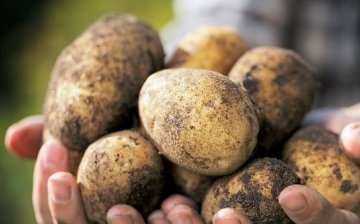
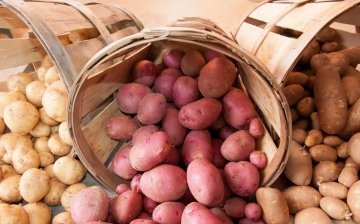
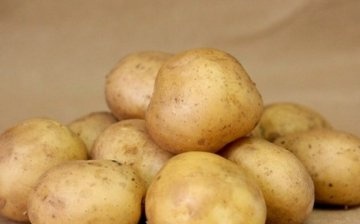



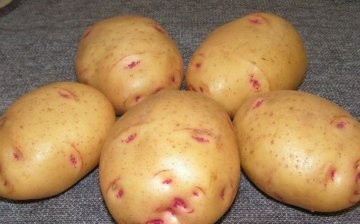
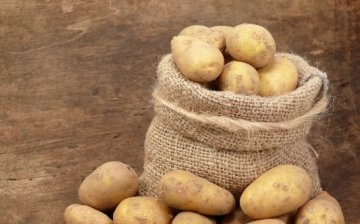
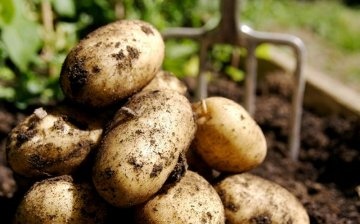









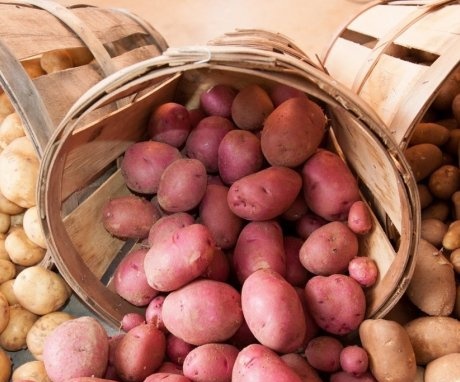
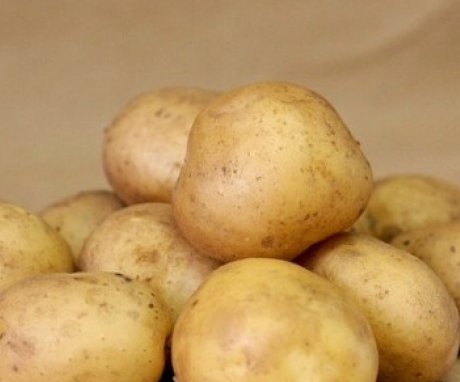

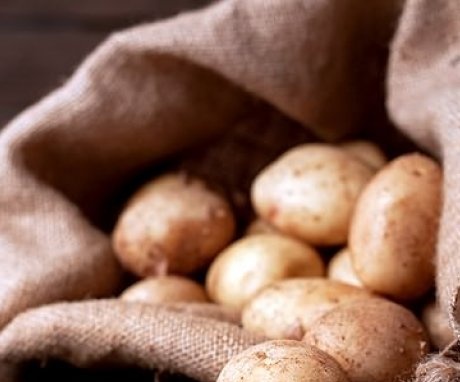
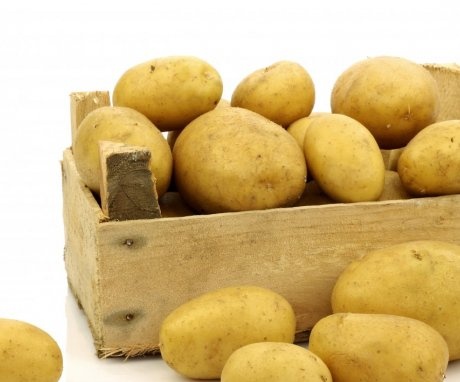


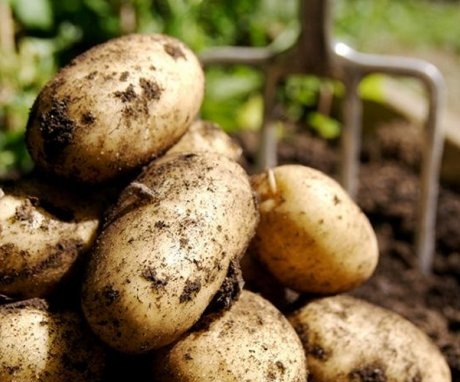
We always plant potatoes of mid and late ripening varieties, such as Red Scarlet, Nevsky and others. If the potatoes are properly looked after, then the harvest will be almost always.